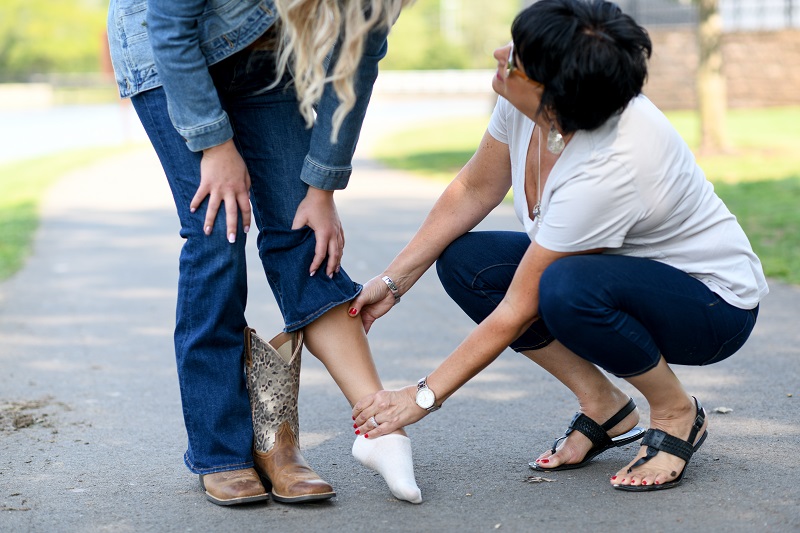How to Treat Shin Splints at Home & When to See A Doctor

October 05, 2022
Shin splints, also known as medial tibial stress syndrome, is a common exercise issue. They are caused from inflammation of the muscles, tendons and tissue around the tibia bone. The pain is typically felt along the inner border of the tibia.
What Causes Shin Splints?
“Shin splints occur when your lower leg is overworked in a repetitive motion,” says Cristobal Beiro, M.D., orthopedic surgeon at Bayshore Medical Center, Jersey Shore University Medical Center, Old Bridge Medical Center and Raritan Bay Medical Center. “Shin splints most commonly happen with a sudden change in physical activity, including an increase in frequency, duration or intensity.”
Several factors can contribute to shin splints:
- Having flat feet
- Wearing improper footwear
- Running on hard surfaces
- Frequently starting and stopping during exercise, such as in basketball and tennis
What Are the Signs of Shin Splints?
The most common symptom is pain in one or both your legs at the front of your shin. This pain can be dull or sharp. You may also experience pain when you push on your shins, and the pain gets worse during and after exercise. The pain usually improves with rest, but severe shin splints may cause pain even while resting.
How Do You Treat Shin Splints?
In most cases, home remedies are sufficient:
- Decrease activity; take two to four weeks off and slowly increase activity after
- Try low-impact activities such as swimming or cycling
- Take anti-inflammatories
- Stretch
- Ice shins for 10–20 minutes three to four times a day
When to See a Doctor for Shin Splints
“You should see a doctor if the pain doesn’t improve or gets worse. Untreated shin splints can lead to stress fractures,” says Dr. Beiro. “Your doctor may do an X-ray or perform other tests to rule out fractures or other shin problems.”
Professional help may be needed to find proper arch supports, and physical therapy could help strengthen muscles groups that help maintain proper running form. Weak calf or core muscles can lead to altered running mechanics and undue strain on the tibia.
How to Prevent Shin Splints
Dr. Beiro says there are several ways to prevent shin splints from happening:
- Increase physical activity or training slowly
- Warm up and stretch before and after exercise
- Avoid running on hard surfaces
- Wear proper shoes and/or arch supports
- Cross-train to strengthen all muscle groups.
“Getting active has huge health benefits, but make sure that you give your body time to adjust so you can enjoy all the fun and health benefits without pain or setback,” says Dr. Beiro.
Next Steps & Resources:
- Meet our source: Cristobal Beiro, M.D.
- To make an appointment with Dr. Beiro or an orthopedic specialist near you, call 800-822-8905 or visit our website.
- Struggling with an exercise injury? Find rehabilitation services near you
The material provided through HealthU is intended to be used as general information only and should not replace the advice of your physician. Always consult your physician for individual care.
Find a doctor near me
Clinical Contributors

How to Protect Yourself From Common Sports Injuries
Sports and physical activities bring plenty of benefits, from improving physical and mental health to relieving stress to helping with weight management. But they could also put you at risk of injury if you’re not careful.

6 Tips For Running A Marathon For Beginners
Learn Dr. Silver's 6 marathon training tips for beginners. Avoid common running injuries & improve your performance. Get expert advice now!
Find a doctor near me

How to Avoid Injury After A Long Workout Break
Avoid workout injuries after a break. Dr. Delavaux shares expert tips for safe exercise resumption. Prevent injuries and return to fitness gradually. Call 800-822-8905.

Why Do Your Knees Hurt When You Squat?
Knee pain when squatting? Learn why from Dr. Russoniello and find relief. JFK University Medical Center offers expert care. Call 800-822-8905.

Got 10 Minutes? Try a Mini Workout
Try a 10-Minute Mini Workout! Find simple exercises to fit your day. Learn from JFK Johnson Rehabilitation Institute experts. Schedule an appointment: 800-822-8905

Easy Morning Exercises for Busy Parents
Easy Morning Exercises for Busy Parents. Dr. Patel offers simple, time-saving workouts. Improve your health and well-being. Call 800-822-8905.

